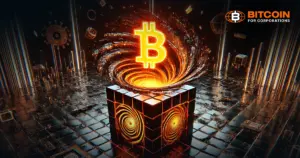PRESS RELEASE. EVT (Encrypted Varable Token), is said to be an upgraded version of NFT, Non-Fungible Token. It will soon replace NFT for creatives. Is it possible? This is how these tokens' backbone tech works.
What is NFT? (Non-Fungible Token)
Non-fungible tokens are financial security that consist of digital data stored on a blockchain. This is a type of distributed ledger. An NFT's ownership is recorded in the blockchain. The owner can transfer the ownership to another person, which allows NFTs for sale and trading.
An NFT is a table that contains a record and a code to allow for the updating of this record. The NFT contains metadata. This could include an image, mp3, or mp4 file, as well as a digital file. NFT is often argued to fundamentally alter the artist landscape and how art trades. However, this misconception is erroneous and false. Many artists who rush to NFT creation believe that they can trade their work for residual royalties. This is due to structural limitations in code.
Artists and creatives have long tolerated the art trade because it was easier to sell their work. Curators were essential to artists because they provided clients and physical space for them to exhibit/sell their art. The management fees often are very unbalanced. Curators can take more than 60%-70%, which leaves the artist with enough money to live comfortably and continue creating work.
NFTs are supposed to change everything. This is the big myth. It doesn't, and here's why.
OpenSea allows artists to create paintings in the shape of NFTs and post them on the site. Bob, a user, then purchases the NFT for $1000. The smart contract states that 30% of the sale proceeds to the artist. If Bob purchases it, he will receive $300. However, if Bob becomes a curator or resells it later, he will not get $300.
The artist hoped that the NFT would trade for millions or tens of thousands of dollars. This would boost his fame and revenue. This resale royalty is currently only possible through the platform OpenSea, but not in the smart contract of NFT. Therefore, only third-party centralized marketplaces are able to facilitate this residual royalty. It is similar to going through a gallery or dealing with a traditional curator.
It's technically impossible to write code that would allow resale royalty payments continuously. NFT is instead implemented using a smart contract that only claims static properties. Think about this: If Bob purchases the NFT artwork, keeps it in a Metamask wallet, but decides to transfer it into one of the other digital wallets instead, will that wallet still give the artist 30%? This would leave Bob with a loss since he hadn't sold the item to anyone else. It states that Bob is solely the owner of this digital item.
Artists could be paid a continuous royalty every time their NFT is sold or traded. This would be truly innovative.
Let's continue with the example. Let's suppose that the artist becomes a household name in the art world and everyone suddenly wants the NFT Bob owns. Someone offers $1,000,000 to buy it. Bob would happily sell the painting and, once the deal was done, Bob would receive 30% of the $1,000,000 NFT. This would be a great way to revolutionize the world of the artist and eliminate the need for curators or art houses. This would mean that the royalty structure for the artist would change. Maybe the artist would get 70% of their creations, while dealers would receive 30% every sale.
This is possible. It could theoretically work using the EVT structure (encrypted variable token). EVTs enable encrypted variables to be included in the smart contract. EVT data can be classified as variable parts and invariable. Variable data can have multiple dimensions, which can then be programmed with space, time, and multiple-functions.
EVTs can be dynamic, but NFTs are static. EVTs enable certain metadata elements to be reprogrammed. EVT functionality solves the residual royalty problem. EVTs allow creators to continue to receive a portion of royalties while the content/metadata is traded. NFTs were not designed in this manner due to security concerns surrounding the coded languages.
Solidity is a programming language that was developed by Ethereum. NFTs are written using a dynamic Newton Blockchain code with Rust-based modifications. Encrypted metadata, which is part of the Solidity programming language can indicate hidden malware or poorly written code that could cause damage to your devices. Encrypted code can be executed in Rust-based programming codes, which offer greater security and allow creators to enjoy residual royalties, changes to their digital assets, as well as true encryption privacy when content viewing.
EVTs can be a game-changer. They allow ownership with privacy and flexibility. Wave is a DApp that plugs into the Newton Blockchain, enabling dynamic ticketing for viewing media. One can purchase an EVT with secret movie content, and then create X amount of tickets to resell. Only those who have the right key can view the contents of EVT encryption functions. This is in contrast to the NFT where the metadata content can be seen by anyone.
For more information, visit:
Wave App
This is a press release. Before taking any action related to the promoted company, or any of its affiliates, or services, readers should do their research. Bitcoin.com does not assume any responsibility for any loss or damage caused by the content, goods, or services in the press release.
—————————————————————————————————————————————————————————————-
By: Media
Title: The Future of NFT Is EVT, the New Game Changer Token
Sourced From: news.bitcoin.com/the-future-of-nft-is-evt-the-new-game-changer-token/
Published Date: Tue, 20 Sep 2022 17:00:15 +0000
Related posts:
 Flagship Products from FOREO Launch as NFTs Prior to Conventional Release. Paving the way for Skincare Innovation
Flagship Products from FOREO Launch as NFTs Prior to Conventional Release. Paving the way for Skincare Innovation
 Predictions of Bitcoin and World Markets at the Upcoming FOMC Meeting
Predictions of Bitcoin and World Markets at the Upcoming FOMC Meeting
 Web3 Messenger App: Decentralized Platforms Let Users “Build Their Communities in Safe Places”
Web3 Messenger App: Decentralized Platforms Let Users “Build Their Communities in Safe Places”
 Web3 Game Platform Iskra Raises $40M, Partner with Gate.io in Token Generation Event
Web3 Game Platform Iskra Raises $40M, Partner with Gate.io in Token Generation Event
















